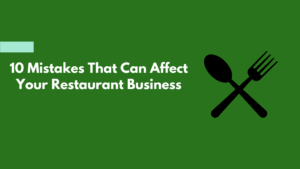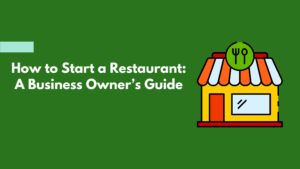In the fast-paced, highly competitive world of the restaurant industry, marketing is everything. Whether you’re running a cozy café, a trendy bistro, or an upscale fine dining restaurant, attracting new customers and retaining loyal ones is key to success, but without effective marketing strategies for restaurants, even the best dining experiences can go unnoticed.
Let’s face it, most restaurant owners and managers are more focused on creating mouthwatering dishes and providing exceptional service than having a solid marketing plan.
In this guide, we’ll explore marketing strategies that can help you grow your customer base, increase brand awareness, and boost revenue. From optimizing your website for restaurant business to leveraging social media platforms and running email marketing campaigns, these strategies are designed to help you stay ahead of the competition. Let’s get started!
Table of Contents
1. Optimize Your Restaurant’s Online Presence
If you haven’t already, your first step in marketing should be ensuring your restaurant’s online presence is fully optimized. Investing in restaurant services website design ensures your website is visually appealing, mobile-friendly, and easy to navigate.
Today, most people search for restaurants online before deciding where to eat. In fact, studies show that nearly 90% of consumers search online for local restaurants before dining out. That means having an up-to-date, mobile-friendly, and user-friendly website is essential.
When creating your restaurant services website design, focus on simplicity and ease of navigation. Include all the critical information like your menu, hours of operation, location, and reservation options. But don’t stop there.
SEO (Search Engine Optimization) is a crucial part of making sure your restaurant appears in local search results. Incorporating keywords like “restaurant services website design” and “website for restaurant business” into your website content will help you rank higher on search engines like Google, making it easier for potential customers to find you.
In addition to SEO, make sure you claim your Google My Business profile and keep it updated with accurate information. This will help your restaurant appear in local search results and on Google Maps. Add high-quality images of your restaurant, food, and drinks to entice customers and show off your ambiance.
Finally, don’t forget the importance of online reviews. Positive reviews can significantly impact your restaurant’s reputation, so make sure you encourage happy customers to leave reviews on platforms like Google, Yelp, and TripAdvisor.
2. Social Media as a Core Part of Marketing Strategies for Restaurants
Social media has become an indispensable tool for businesses in virtually every industry, and restaurants are no exception. Platforms like Instagram, Facebook, and TikTok are perfect for showcasing your food, engaging with your customers, and building a loyal community.
Instagram is especially powerful for restaurants because of its focus on visual content. Post beautiful photos of your dishes, behind-the-scenes kitchen moments, or your restaurant’s atmosphere. You can even use Instagram stories and reels to give customers a more personal look into your restaurant.
On Facebook, engage with customers by responding to comments and messages, sharing updates on new menu items or specials, and running promotions or contests. You could run a giveaway where users tag their friends for a chance to win a free meal or a discount.
TikTok has exploded in popularity, especially among younger audiences. Use this platform to showcase creative videos that highlight your food, staff, or restaurant events. The fun, informal nature of TikTok allows you to show off your brand personality and connect with potential customers in a fresh way.
But don’t just post content for the sake of posting. Engage with your followers by responding to comments, messages, and reviews. Interact with other local businesses, influencers, and food bloggers to amplify your reach and gain credibility.
3. Implement an Email and SMS Marketing Strategy
Email and SMS marketing are highly effective for keeping customers engaged and encouraging repeat visits. But many restaurants fail to fully leverage this tool. Building an email list of loyal customers is a must for long-term success. Sending out newsletters with promotions, menu updates, and event invitations encourages repeat visits.
Create a simple opt-in form on your website for restaurant business or social media platforms where customers can sign up for special offers, event announcements, or discounts. You can also incentivize sign-ups by offering a discount on their next meal or a free drink. Once you have your email list, send out regular newsletters with updates, promotions, or exclusive offers.
SMS marketing is another powerful tool for reaching customers quickly. Text messages have an incredibly high open rate, so they’re perfect for time-sensitive offers like happy hour specials or limited-time menu items. By asking customers for their phone numbers, with their consent, of course, you can send personalized, targeted messages straight to their phones.
Together, email and SMS marketing can help you nurture customer relationships and drive repeat visits. Make sure to avoid spamming your customers with too many messages. Instead, focus on sending relevant, valuable content that aligns with their interests.
4. Offer Online Ordering and Delivery Services
Many customers prefer ordering food online, whether for pickup or delivery, and restaurants that don’t offer these services risk losing out on potential business. A seamless online ordering experience ensures customers can easily place orders for pickup or delivery without frustration. Make sure your website includes an intuitive online ordering system with clear menu options and pricing.
Whether you’re partnering with third-party platforms like Uber Eats, DoorDash, or Grubhub or setting up your own online ordering system through your restaurant services website design, offering delivery is a major marketing strategy for your restaurant.
Customers love the convenience of having their favorite meals delivered to their homes, so make sure your online ordering system is simple to use.
If you decide to implement a delivery system through your website, you’ll need to make sure your restaurant services website design accommodates this feature.
Consider adding a dedicated section for online ordering or using an app that integrates with your website to streamline the process. Offering curbside pickup or takeaway options can also be a great way to capture customers who prefer dining at home.

5. Host Events and Themed Nights
One of the most effective ways to increase foot traffic and generate buzz around your restaurant is by hosting events and themed nights. These could be anything from wine and food pairings to trivia nights, live music, or cooking classes. The key is to create experiences that will make customers want to visit your restaurant and share their experiences on social media.
For example, you could host a Taco Tuesday special with live mariachi music or a seasonal wine tasting event. You could even collaborate with local artists or musicians to offer entertainment and attract new audiences. Make sure to promote these events through social media, email marketing, and your website for restaurant business, so your customers know about them in advance.
Don’t forget about the power of word-of-mouth marketing. When customers have a great time at an event, they’re likely to tell their friends and share photos online, creating a snowball effect that can drive more traffic to your restaurant.
6. Partner with Influencers and Food Bloggers
Influencer marketing is a game-changer for restaurants. Food bloggers and influencers have a significant impact on restaurant recommendations. They can be powerful allies in promoting your restaurant to a wider audience.
Start by identifying influencers and bloggers who are relevant to your restaurant’s niche and who have a following that aligns with your target audience. You could invite them to your restaurant for a complimentary meal in exchange for an honest review or social media post.
Don’t forget to encourage them to share their experiences using a specific hashtag or tagging your restaurant’s social media accounts.
Influencer and blogger marketing is especially effective when it comes to restaurants because food is so visually appealing and shareable. A beautiful shot of your signature dish or a behind-the-scenes look at your kitchen can easily go viral if it’s shared by the right influencer.
7. Implement a Loyalty and Referral Program
Customer loyalty is incredibly important in the restaurant industry. When customers return to your restaurant, they’re not only helping to boost your revenue, but they’re also likely to become your best advocates. One way to encourage repeat visits is by implementing a loyalty program.
You could offer customers points for every meal they purchase, which can later be redeemed for discounts, free meals, or exclusive perks. Digital loyalty programs are an easy way to track customer visits and reward them for their loyalty. They can also be integrated into your restaurant services website design, so customers can check their points and redeem rewards online.
Additionally, a referral program can help you acquire new customers while rewarding existing ones. Offer customers a discount or freebie when they refer a friend who makes a purchase, as it is a great way to incentivize your current customers to spread the word and bring in new business.

8. Engage in Local Community and Partnerships
Building relationships with your local community can expand your reach. Supporting local businesses, charities, and events can help you build a loyal customer base and increase your visibility in the area.
For example, consider partnering with local farmers, breweries, or wineries to create unique, locally sourced dishes or drink pairings. You could also sponsor local sports teams, host charity events, or participate in community festivals.
Engaging in local partnerships also opens up opportunities for cross-promotions. Partner with nearby shops or services to offer discounts to each other’s customers. For instance, a nearby gym might promote your restaurant to its members in exchange for you offering a discount on meals.
9. Run Targeted Online Ads
Running paid ads on platforms like Facebook, Instagram, and Google Ads is a faster marketing strategy for your restaurant to attract new customers and increase restaurant bookings. Paid ads allow you to target specific demographics based on location, interests, age, and other factors, making them highly effective for restaurants.
You could run ads promoting your latest menu items, special offers, or events. Retargeting ads can also be highly effective, if someone has visited your website for restaurant business or engaged with your social media accounts but hasn’t made a reservation or placed an order, retargeting ads can remind them to return.
Make sure to track your ad performance and adjust your strategy based on what’s working. Ads can be an excellent way to drive immediate traffic, but it’s important to monitor your budget and ensure a good return on investment.
10. Encourage and Manage Online Reviews
Online reviews are incredibly powerful when talking about restaurant services website design. A strong collection of positive reviews on platforms like Google, Yelp, and TripAdvisor can help your restaurant stand out and influence potential customers.
Encourage customers to leave reviews by simply asking them after a great dining experience. You can also offer incentives, like discounts or freebies, to customers who leave reviews. Just be sure to follow the platform’s guidelines for incentivized reviews.
It’s equally important to manage negative reviews professionally. Address any complaints with empathy and offer solutions. How you respond to negative reviews can have a big impact on how future customers perceive your restaurant.
Conclusion
Implementing these marketing strategies in your restaurant services website design will help you increase your restaurant’s visibility, attract new customers, and drive revenue.
From optimizing your restaurant services website design to leveraging social media to implementing loyalty programs and running targeted ads, these strategies are designed to help your restaurant thrive in today’s competitive market.
Remember, the key to success is consistency and engagement. So, start experimenting these marketing strategies on your website for restaurant business and watch your restaurant grow.
If you need expert assistance on how to make a website for restaurant services, Texttot can help. Our team specializes in building high-performing websites for restaurant businesses that drive traffic and increase online orders. Get in touch with us at Texttot to learn how we can help you take your restaurant marketing to the next level!


